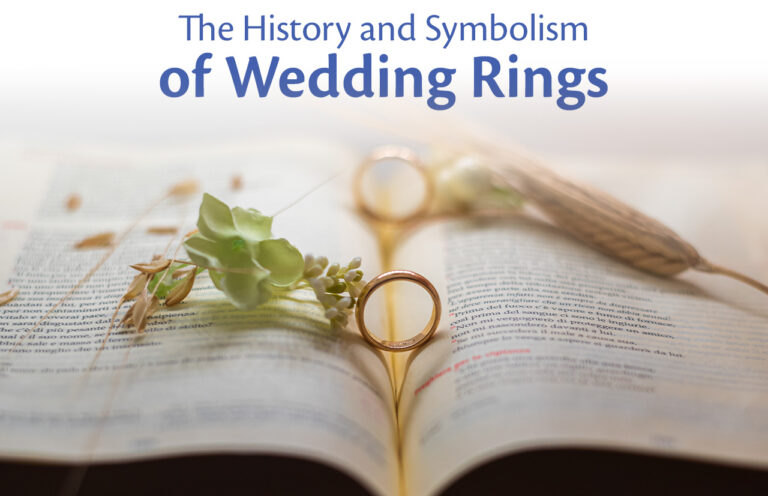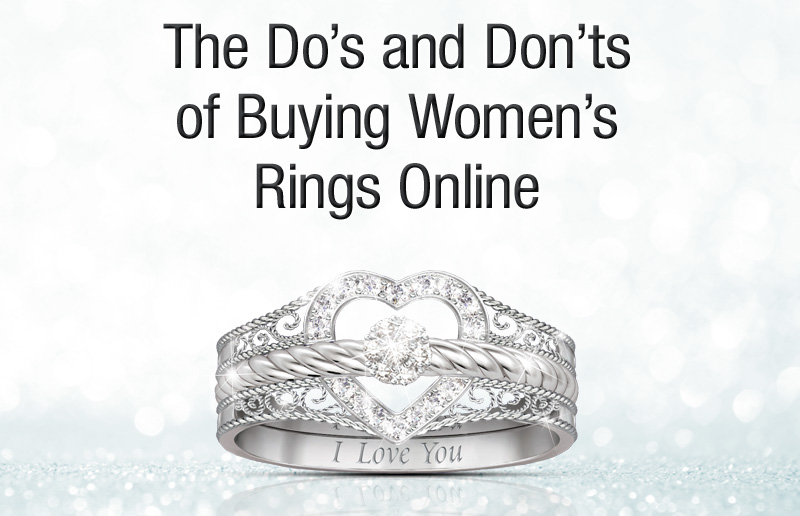Wedding rings are one of the most enduring symbols of love and commitment, transcending time, culture, and tradition. Whether simple or ornate, these circular bands represent the promises couples make to one another on their wedding day. But beyond their role in modern ceremonies, wedding rings carry a rich history and deep symbolism that has evolved over millennia. In this blog post, we’ll explore the fascinating origins, cultural significance, and modern trends surrounding wedding rings, helping you appreciate the meaning behind this timeless tradition.
Table of Contents
The Origin of Wedding Rings
The tradition of exchanging rings to symbolize love and commitment is ancient, with roots tracing back to some of the earliest known civilizations. The first recorded use of wedding bands can be found in Ancient Egypt around 3,000 BC. The Egyptians viewed the ring’s circular shape as a symbol of eternity, representing an unbroken bond that could never be severed. Rings were often crafted from braided hemp or reeds and worn on the fourth finger of the left hand, which they believed contained the “vena amoris” — the vein of love — that connected directly to the heart. Modern examples of wedding bands can be found on The Bradford Exchange website.
This tradition was passed to the Greeks, who exchanged rings as tokens of love and affection. But in ancient Rome, the wedding ring became more formalized. Romans exchanged iron rings to symbolize strength, permanence, and the binding nature of marriage. These iron bands, known as “annuli,” reflected the Roman value of durability and the seriousness of the marital contract. These rings sometimes featured key motifs, symbolizing the wife’s role in managing household resources. By the 2nd century CE, gold rings became common among the wealthier classes, and designs grew more elaborate, including portrait rings and intricate carvings.
The Journey Through Time
As wedding rings traveled through time and different societies, their meaning and design evolved in fascinating ways.
Ancient Egypt: Eternity and Immortal Love
For the Ancient Egyptians, wedding rings were steeped in the symbolism of eternity. The endless loop of the ring signified the eternal nature of love and life. Egyptian rings were often simple in design but deeply symbolic, typically fashioned from hemp or reeds, with later iterations made from leather, bone, or ivory.
Ancient Rome: Strength and Permanence
In Rome, the tradition of exchanging rings became a legal symbol. Iron rings represent the strength of the marital bond, emphasizing the unbreakable commitment between husband and wife. Wealthier Romans eventually transitioned to gold rings, indicating status and wealth. During this time, the fede ring design, featuring two clasped hands, became popular as a symbol of friendship, trust, and partnership.
Medieval Europe: The Churchʹs Influence
In medieval Europe, the Christian church played a crucial role in popularizing the exchange of wedding rings. Rings became a key part of religious marriage ceremonies, symbolizing the unity of the couple in the eyes of God and the sacred and eternal nature of marriage. Gold became the material of choice, a reflection of purity and divine love. During this time, intricate designs such as gemstone embellishments and engravings began to emerge, adding personal and spiritual significance to the rings. Rings during this time often featured gemstones, such as rubies for passion, sapphires for heaven, and diamonds for steadfast love.
Changing Materials and Designs Over Centuries
As time progressed, the materials used for wedding rings and bridal jewelry became more luxurious. From iron and gold to silver and platinum, the choice of material reflected not only the couple’s wealth but also their cultural values. The designs also grew more intricate with the addition of engravings and gemstones. Renaissance-era gimmel rings, made of two or three interlocking bands, symbolized the union of two individuals into one. Similarly, posy rings, inscribed with romantic verses, became popular during the Elizabethan era. Diamonds, first popularized in the Victorian era, became a symbol of eternal love due to their durability and brilliance. Today, wedding rings come in a variety of materials and designs, each chosen to reflect the personal tastes and values of the couple.
The symbolism of Wedding Rings
The wedding ring’s circular shape is perhaps its most universally understood symbol. The circle, with no beginning or end, represents eternity, infinite love, and the endless bond between two people. This shape signifies wholeness and perfection in many cultures, making it an ideal metaphor for marriage commitment.
Materials and Their Meanings
Different materials used in wedding rings also carry symbolic meanings. Gold, for instance, has long been associated with purity, wealth, and divinity. Its enduring nature makes it a fitting symbol for a long-lasting marriage. Platinum, one of the rarest metals and known for its durability, represents exclusivity and strength.
Diamonds, known for their hardness, symbolize eternity and unbreakable commitment, making them a popular choice for wedding rings. They became widely used in engagement rings by those who could afford them after Archduke Maximilian of Austria gifted one to Mary of Burgundy in 1477, symbolizing eternal love and commitment.
Cultural Variations in Symbolism
While the symbolism of wedding rings is largely universal, there are cultural variations. In some cultures, the material of the ring may carry a different meaning, or the way it is worn might differ. For example, in some European countries, the wedding ring is traditionally worn on the right hand instead of the left. In Jewish traditions, wedding rings are often plain, unadorned bands of gold, symbolizing the purity of the marriage bond.
Wedding Rings Around the World
Different cultures have unique traditions regarding wedding rings. In Hindu weddings, the bride and groom exchange rings to symbolize their union. However, these rings are accompanied by the mangalsutra necklace, rather than a ring, as the primary symbol of marriage, representing the eternal bond between husband and wife. In Chinese culture, gold rings are often given as gifts during engagement ceremonies, symbolizing wealth and prosperity for the future couple.
In Irish culture, the Claddagh ring, featuring two hands holding a heart with a crown, represents love, loyalty, and friendship. Many still wear it as a wedding or engagement ring. In Greek weddings, couples wear stefana crowns, symbolizing unity, in addition to rings.
In some African cultures, the exchange of rings is accompanied by the gift of intricately woven baskets or beaded jewelry, adding layers of cultural meaning to the ceremony. Meanwhile, in many other Western cultures, the ring exchange remains a central part of the wedding ceremony, symbolizing the couple’s vows and lifelong commitment.
Modern Trends in Wedding Rings
In todayʹs world, couples have more choices than ever when it comes to wedding ring designs and materials. The options are endless, from traditional gold and platinum bands to rings made from alternative materials like titanium and wood. Many couples choose to personalize their rings through custom engravings, unique gemstone selections, or unconventional designs.
Custom and Non-Traditional Rings
Personalization is a growing trend, with many couples designing personalized wedding jewelry that reflects their unique relationship. Non-traditional rings — such as rings with colored gemstones, mixed metals, or unconventional shapes — are also rising. Some couples are choosing to forgo diamonds in favor of sapphires, emeralds, or other stones that hold personal significance or because of concern for the unethical practices of the diamond cartels. You can check out our blog post, Which Wedding Ring Is Right For You? Diamonds vs. Gemstones, to learn more about this trend.
Ethical and Sustainable Practices
There has been a growing movement toward ethical and sustainable wedding rings in recent years. Couples are increasingly mindful of their ring choices’ environmental and social impact, opting for conflict-free diamonds, recycled metals, or lab-grown gemstones that minimize harm to the planet while retaining their significance as a personal symbol of a cherished relationship.
Choosing the Perfect Wedding Ring
When selecting the perfect wedding ring, choosing a piece that reflects both your personal taste and the significance of your commitment is important. Factors such as durability, comfort, and aesthetic preference play a role, but many couples also prioritize ethical considerations, opting for sustainable materials or rings with personal significance. You can read more in our blog post Top 5 Weddings Rings For The Bride-To-Be. Some key factors to consider include:
Material: What type of metal resonates with you? Do you prefer the timelessness of gold or the modern look of platinum? Consider the durability and care required for each material.
Design: Do you want a traditional band or something more unique? Explore design options, from minimalist rings to more elaborate, customized pieces. You can read more in our blog post Matching Wedding Rings To Engagement Rings.
Personal Significance: Choose a meaningful ring to you and your partner. Whether it is a particular gemstone, an engraved message, or a design element that symbolizes your relationship, your ring should tell your love story.
Wedding rings are more than just jewelry — they symbolize love, commitment, and unity, steeped in centuries of history and meaning. From its ancient roots in Egypt and Rome to the varied global traditions of today, the wedding ring carries deep historical and cultural significance. Whether you prefer a traditional gold band or a modern, customized design, your wedding ring should hold personal significance and reflect the values that matter most to you. By understanding wedding rings’ rich history and symbolism, couples can make informed choices that honor tradition and their unique relationship.
The History and Symbolism of Wedding Rings by The Bradford Exchange












